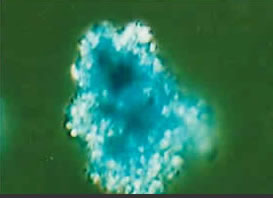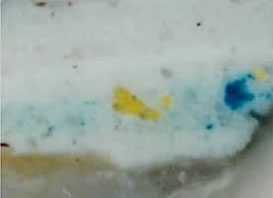Architectural Paint Analysis – Pigment Analysis
Architectural paint research does not always require the identification of pigments and binding mediums. The analysis of pigments and media is always undertaken to answer specific questions. Pigment identification may be commissioned to help clarify the date of application of a paint layer or help establish the original appearance of a paint finish. The range of pigments used by house- painters at any one period was limited by cost constraints. However as more research is conducted a clearer picture of the use composition architectural paint finishes is emerging. Some pigments such as smalt or coal are so coarse that they may be identified by their appearance in cross-section. But most pigments require further analysis before they can be identified conclusively.
- Micro-chemical analysis
Some pigments can be identified using a combination of simple micro-chemical tests which identify the presence of elements such as lead, copper and iron.
- Polarising Light Microscopy
When prepared dispersions of paint layers are examined under polarising light specific pigment may be identified by their characteristic optical qualities.
The pigment blue verditer was used to decorate the ornate ceiling of the Entrance Hall of Kenwood House by Robert Adam c.1773. The pigment was identified by using polarising light microscopy. Blue verditer is an artificial copper carbonate produced by mixing copper nitrate (a by-product of the silver refining industry) with chalk at low temperatures. At Kenwood blue verditer was mixed with different proportions of Naples yellow (lead antimony) another artificial pigment (see below) to produce two distinct shades of green.


